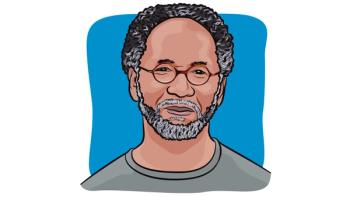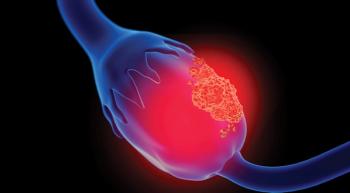
Immunotherapy the Foundation of Melanoma Care, Combinations on the Horizon
Key Takeaways
- PD-1/PD-L1 inhibition is foundational in melanoma treatment, with potential expansion to other cancers. Immunotherapy combinations are expected to become more common.
- T-cell inflammation is crucial in selecting immunotherapy combinations. Adjustments to Yervoy and Opdivo dosing may improve efficacy and reduce side effects.
An interview with Jason Luke, an assistant professor of Medicine at the University of Chicago Medicine, reveals that he thinks immunotherapy should become a main treatment for many patients with melanoma.
Immunotherapy should be the mainstay of melanoma treatment for many patients, says Jason Luke, an assistant professor of Medicine at the University of Chicago Medicine.
“PD-1/PD-L1 inhibition has now become the foundation of therapy in melanoma and, eventually, it will likely be in all of cancer," he says. "Adding PD-1 to almost anything is likely to make it better.”
Luke believes that, in the near future, most patients will receive immunotherapy combination regimens. However, he adds that a lot of questions need to be answered first.
In an interview with CURE, Luke explains that, in order for immunotherapy combinations to make it to prime time, T-cell inflammation will need to be more considered when selecting treatments.
He also discusses why adjustments to the FDA approved immunotherapy combination of Yervoy (ipilimumab) and Opdivo (nivolumab) are needed, and why finding a tolerable and effective BRAF-targeted/immunotherapy combination is challenging—but significant.
How often are you utilizing the combination of Yervoy and Opdivo?
First, I think it is really important to point out that the only survival data we have right now is for PD-1 monotherapy. We do not have survival data for any combinations yet.
In clinical practice, I like to start with PD-1 monotherapy, because I think the toxicity profile of the combination is problematic. That being said, there are situations where I think that it is justified to risk a higher side-effect profile in order to get more benefit.
One example of a situation where I would consider using the combination includes a younger patient with widespread metastatic disease who just wants the maximum treatment.
Also, I would consider it for a patient who has brain metastases where I am concerned that, if we don’t get a response fast, we will lose the potential to give immunotherapy completely.
A third example is when a patient presents with bone-predominant disease. Anecdotally, I think PD-1 monotherapy, in those patients, is less effective so I would be more inclined to give the combination.
I tend to lean toward using the combination less, except for those patients who I would deem “high risk” by clinical factors.
In melanoma, we give a full dose of Yervoy with a lower dose of Opdivo. That causes some good effects, but it also causes a lot of side effects. The question is, “If we used a lower dose of Yervoy and a higher dose of Opdivo, could we get the same benefit without all of the limiting side effects?”
They are doing this in lung cancer, kidney cancer and other tumor types; they are using the same two agents with different doses. Merck has done a clinical trial of Keytruda (pembrolizumab) with Yervoy, but they used a low dose of Yervoy. Their data actually looked really good.
I am going to launch a clinical trial in which we are going to treat patients who received PD-1 as a single agent who progress with the combination of Keytruda plus Yervoy at a low dose. We want to determine if the combination is just as good in second-line as first-line, because then we can avoid exposing the patients to the side effects until we know that they need them.
Will the use of immunotherapy combinations become more commonplace in the future? What is on the horizon?
The future will include combinations with a PD-1 agent as a backbone for all patients. I see combinations splitting into two camps.
PD-1 is not a great marker to tell us about the underlying biology of a tumor. Basically, we need to know if immune cells have gotten into the cancer or not. We call this either a T-cell inflamed tumor or a non—T-cell inflamed tumor. The inflamed tumors are usually PD-L1–positive, where PD-1 monotherapy works really well. That is the space where we should think about combinations that go after other inflammatory markers, such as IDO inhibitors, or other immune checkpoints on T-cells such as LAG-3 or TIM-3.
On the other hand, there are patients with non—T-cell inflamed tumors, which are going to be PD-L1–negative. These are tumors that don’t have any T-cells in the tumor yet. If you give PD-1, it will not work because of the lack of T-cells. Therefore, we need to do something to make the T-cells go there. That is where the Yervoy and Opdivo combinations have some activity.
We know that CTLA-4 agents, such as Yervoy, can actually make some of the immune cells go to the tumor. We could also use oncolytic viruses, including Imlygic (T-VEC; Imlygic), plus PD-1. This might work well because the virus infecting the tumor cell can actually induce the T-cells. There are other combinations that we could do to induce T-cells, including giving a BRAF inhibitor with PD-1 or radiation with PD-1.
Looking at it this way is really going to change drug development. It is not good enough to just know that someone has melanoma. We need to know whether they have inflamed melanoma, in which case we would want to go after the inflammation more. If they are not inflamed, we need something that is going to drive the immune response given with PD-1 to maximize the benefit.
Can oncologists currently identify which patients are inflamed or not inflamed?
Currently, the best test we have for this is PD-L1 staining. We can say that PD-L1 staining is sort of a surrogate for inflamed or not inflamed tumors. However, PD-L1 is actually only one component of the overall inflammation signature. We could look at this more in-depth using gene expression profiling, or we could use multiplex immunohistochemistry, where we look at more than one immunohistochemistry at a time.
The future is really going to be about better diagnostics that look at more than one marker. One marker for PD-L1 isn’t enough to really give us the answer. Some patients who are PD-L1—negative still respond, so this marker is clearly not perfect and is not giving us the big picture.
Merck has actually done some of this with their clinical trials. At the 2015 ASCO Annual Meeting, they had four different presentations with Keytruda in melanoma, gastric and bladder cancer. In those trials, they showed that a gene expression test actually did a better job than the PD-L1 test. It actually better identified which patients would benefit from Keytruda. These tests are being developed.
Some day we will use more than one diagnostic test to give us the best information of what is going on within the tumor—whether it is inflamed or not inflamed—and be able to pick one of these immunotherapy combinations that may be best for each individual patient.
How do you see the role of BRAF inhibitors fitting into all of this?
People disagree about this. It looks like the patients who do the best with BRAF inhibitors are those who have the least amount of tumor. That is sort of backward from the way we always thought about it. We don’t really know the answer. I think BRAF is a very effective therapy in shrinking tumors fast, so incorporating it into the immunotherapy model is very important. However, we need to think about doing it in a smart way.
If you start a BRAF inhibitor, you will see more immune cells after two weeks if you do a biopsy of the tumor. However, if you keep giving the BRAF inhibitor until it stops working and then do a biopsy, the immune cells actually go away.
It is possible that the BRAF inhibitor initially has good immune effects but, later on, it actually starts to cut off the immune response. For BRAF-mutated patients, we want to think about a future where we can combine the modalities to get the maximum benefit, but we are going to have to think about it in a smarter way. Perhaps an intermittent dosing schedule would be effective, where we give a BRAF inhibitor for one or three months, and then stop it, but we continue immunotherapy. Later on, we bring the BRAF inhibitor back. We are going to think about new ways to do clinical trials to look at questions like that.
There have been clinical trials done with Yervoy in combination with either BRAF or MEK inhibitors, but those trials were all stopped due to toxicity.
In community practice, oncologists should not yet be combining these agents, as there are no data. However, there is a lot of investigation into the intersection of these drugs in the future to try and combine them in a safe way that maximizes their benefit. Most people agree that we need to find some way to combine these therapies, because they are so effective individually.





